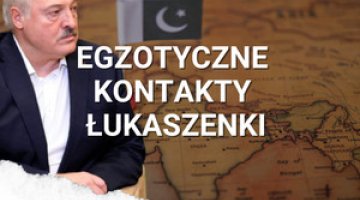Belarus: the protests are dying down
The Sunday protests against Alyaksandr Lukashenka were seen again on 8 November, this time under the slogan ‘People's Rule’. The largest demonstration, with a little over ten thousand participants, took place in Minsk. Only a few small-scale actions with the participation of dozens of people were seen in the provinces (including Smarhon and Babruysk). In some cases the demonstrations were dispersed even before they started (Vawkavysk). The strength of the street protests seen in Belarus since the presidential election on 9 August has been waning over the past few weeks (last week's demonstration was attended by around 30,000–50,000 people). The low turnout this week proves that this downward trend is continuing. The police also managed to prevent the demonstration of medical workers in Minsk on Saturday, and the few participants of the women’s march were arrested.
On Sunday, law enforcement forces blocked the streets and dispersed columns being formed by demonstrators from the morning hours, so for the first time the demonstrators failed to implement the march plan announced in social networks. Unlike a week earlier, this time the officers brutally arrested the dispersed demonstrators en masse, as well as random passers by. Violence was also used against events organised spontaneously in the evening, in districts far away from the city centre. In total, more than 1,000 people were detained (mainly in Minsk); this being the largest number since the August demonstrations in the first days after the elections.
The brutal methods adopted by law enforcement forces are accompanied by legal measures intended at forcing disaffected citizens into obedience. The prosecution authorities launched criminal proceedings against 231 participants of the March Against Terror held on 1 November, on charges of organising and active participation in acts that seriously violate public order (Article 342 of the Criminal Code). They may be sentenced for this up to three years in prison. So far, the demonstrators have been punished mainly with several days' detention or a fine, and some have been released without any legal consequences. Moreover, on 5 November Lukashenka, referring to the pro-opposition sentiments predominant among the medical community and doctors’ readiness to go abroad to work, announced that these people would not be able to find a job in healthcare again.
On 7 November, during the opening ceremony of the first unit of the Astravets Nuclear Power Plant, Lukashenka suggested that Lithuania and Poland should abandon their ‘confrontational rhetoric’ and establish dialogue without interfering in Belarus's internal affairs. He also tackled the issue of constitutional reform, which he described as “a natural process resulting from a generational change in Belarusian society” that had nothing to do with pressure from the Kremlin.
Commentary
- The significant decline in the number of demonstrators is primarily an effect of the fatigue caused by the lengthy confrontation with the regime, which has not only failed to bring about any political changes, but is also leading to further repressions against rebellious citizens. Belarusians are discouraged from participating in demonstrations not only because of the risk of being arrested and beaten during the protests, but also by the tightening of the legal consequences and threats against the most rebellious circles which are being repeated by representatives of the government. Therefore, a further decline in the number of demonstrators should be expected, possibly until the protests completely die down. However, since the level of public dissatisfaction has been invariably high, the government will not be able to regain full control over the domestic situation, and the activity of the regime's opponents will be more concentrated on the Internet and in small local communities at private homes or in city districts.
- The significant decrease in the scale of the demonstrations in Minsk has prompted the law enforcement forces to intensify repressive measures in order to definitively suppress the protests. The number of protesters on 8 November seems to have fallen below the level that had so far prevented the police from the use of violence on a broader scale. Therefore, a further escalation of violence against the demonstrators (including pacification) should be expected in the coming weeks. All this will be accompanied by intensified attacks from the state propaganda.
- Lukashenka’s declarations that he is willing to establish dialogue with Poland and Lithuania and his assurances that the reasons behind the announced constitutional reform are dictated by the internal situation alone are an attempt to rebuild the image of a strong leader who is controlling the situation in the country and conducting a multidirectional foreign policy. However, in reality it is the Kremlin that is exerting pressure for the systemic changes, seeing this as an opportunity to weaken Lukashenka. Furthermore, the rather unexpected ‘friendly’ gesture towards Lithuania and Warsaw is not reliable, given Minsk’s numerous accusations that both of these countries have made attempts to destabilise and dominate Belarus.




